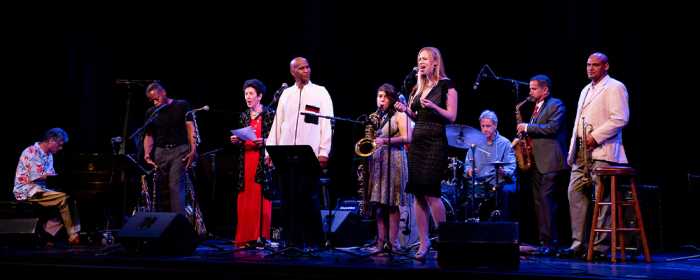Recently, State Assemblymember Ellen Young presented a $5,000 Assembly check to the Board of Directors of the “Latimer House Museum” in Flushing.
Why should you care?
Unless you are reading this by candlelight, you owe a debt of gratitude to the former resident of Holly Avenue in Flushing, Lewis Howard Latimer.
Often erroneously credited as “the man who really invented the light bulb,” Latimer’s achievements are no less brilliant, and his former home is now the Lewis H. Latimer House Museum and is listed in the National Register of Historic Places.
Latimer, the child of escaped slaves, was born in Chelsea, Massachusetts in 1848 and enlisted in the Navy as a cabin boy during the Civil War, serving on the steam gunboat USS Massasoit.
After the war, he got a job as an office boy in a patent lawyer’s firm and rapidly rose to the position of draftsman, creating technical drawings for patent applications.
Latimer got his first patent in 1874, for an improved “water closet for railroad cars.” His improvement became the forerunner of today’s airline toilets.
Latimer drew the plans for Alexander Graham Bell’s telephone patent in 1876.
By 1880 he worked for Thomas Edison’s main rival in the field of electricity, Hiram Maxim. Latimer witnessed Maxim’s patent for an electric light, and in 1881, patented an improved carbon filament for the incandescent light bulb.
After a long and bitter legal dispute, Edison won the patent war for the electric light bulb as well as the historic title of its inventor. Maxim moved to England; where he went on to invent the machine gun.
Edison acquired Maxim’s (and Latimer’s) patents relating to the light bulb before engaging Latimer’s services in 1885. As chief engineer and patent investigator for the Edison Electric Light Company, Latimer appeared as an expert in numerous lawsuits between Edison and competitors during his 25 years with the firm.
In recognition for his work in the field, and for protecting Edison’s empire, Latimer was named one of the “Edison Pioneers,” though he never worked in the famous Menlo Park Edison laboratories in New Jersey.
Latimer lived in the Flushing house, which is now a museum, from 1903 until his death in 1928. It remained in the family until his daughter Louise’s death in 1963. The house was saved from demolition when it was moved from Holly Avenue to its present location at Leavitt Field in 1988.
The Latimer House Museum is located at 31-41 137th Street and owned by the New York City Department of Parks and Recreation. It features educational programs concerning history and science thanks to donations and additional funding.
Individuals or groups seeking to make a donation to the Latimer House may send a check to the Lewis H. Latimer Fund, c/o 37-22 Union St., Flushing, NY 11354.



































